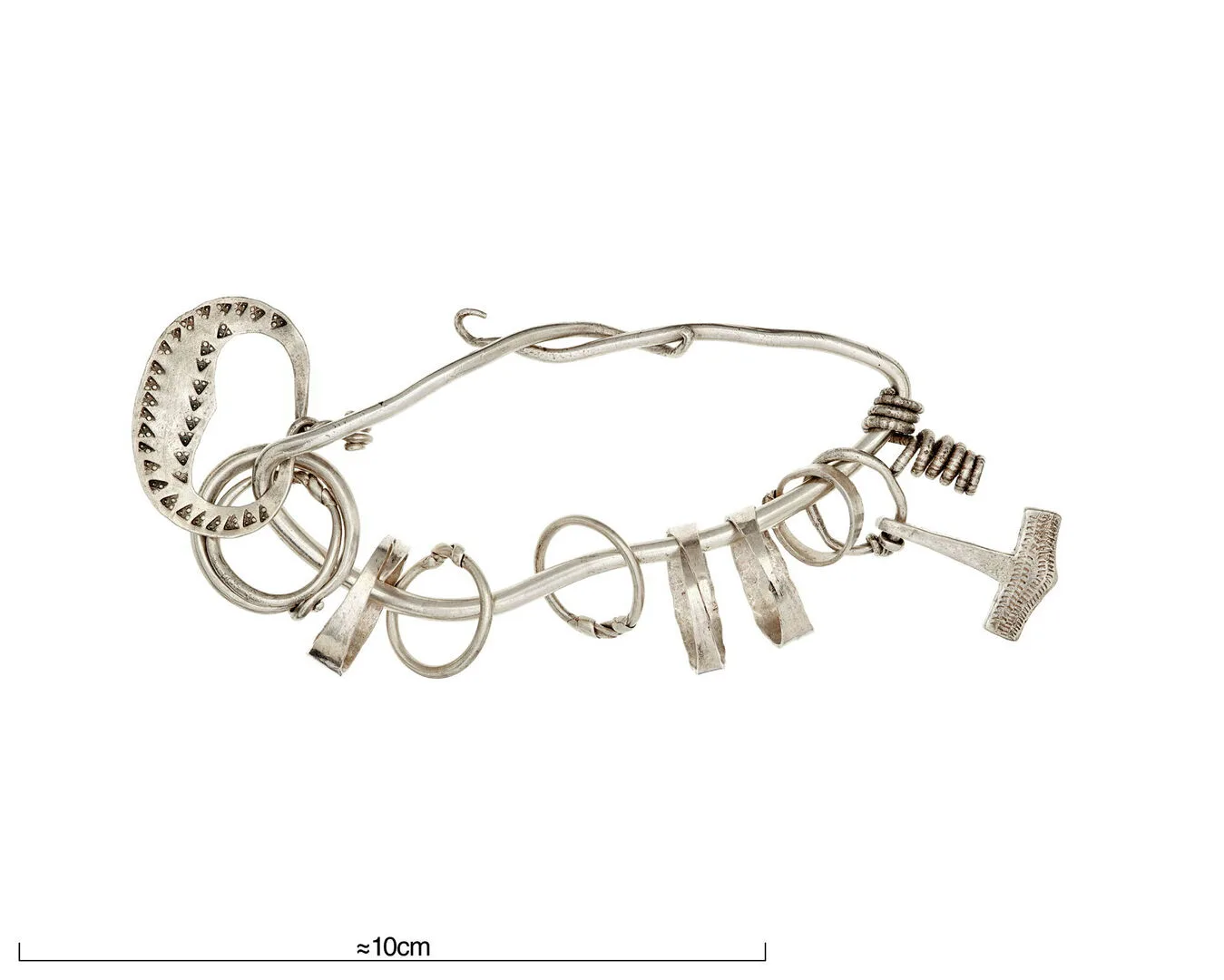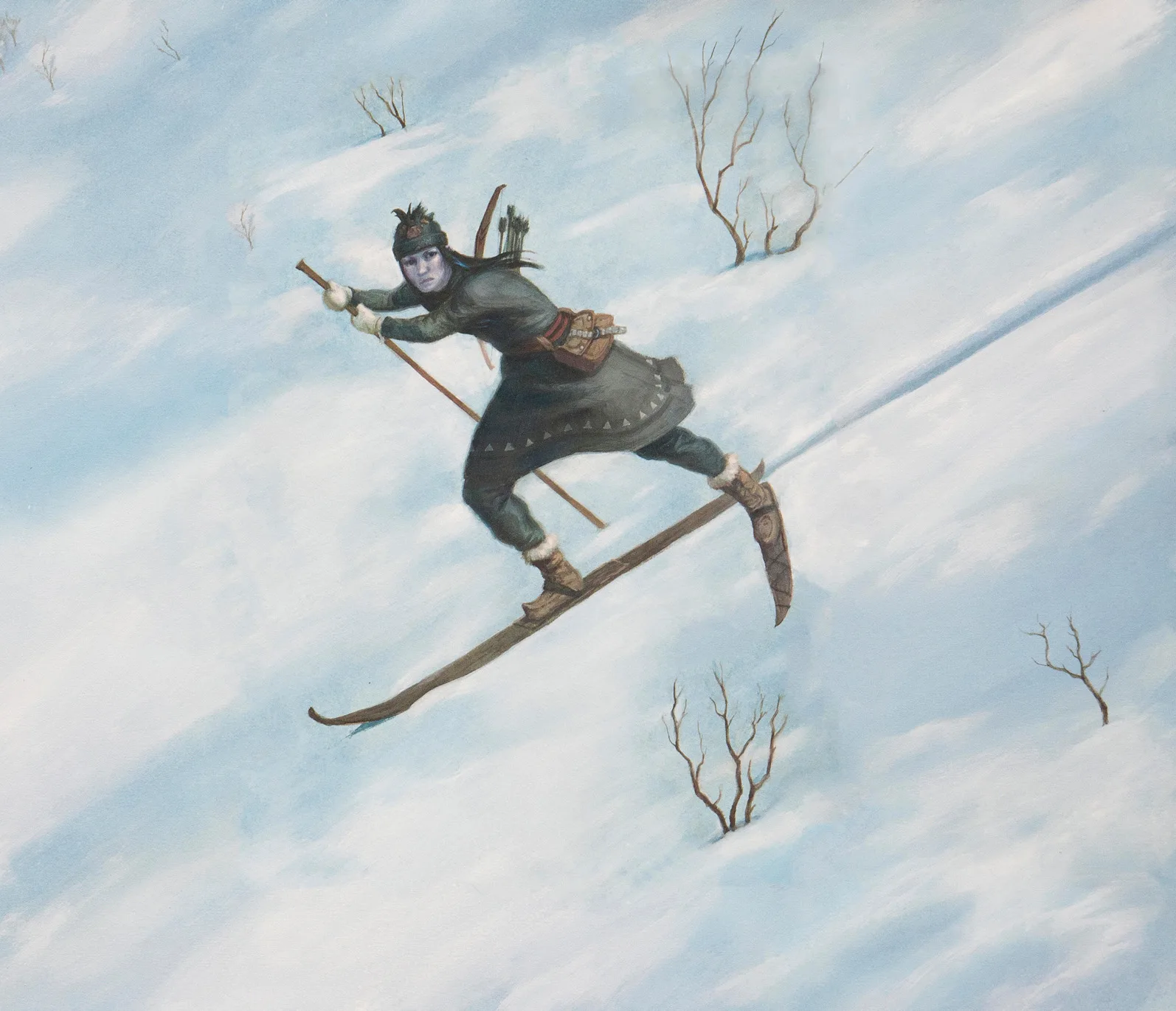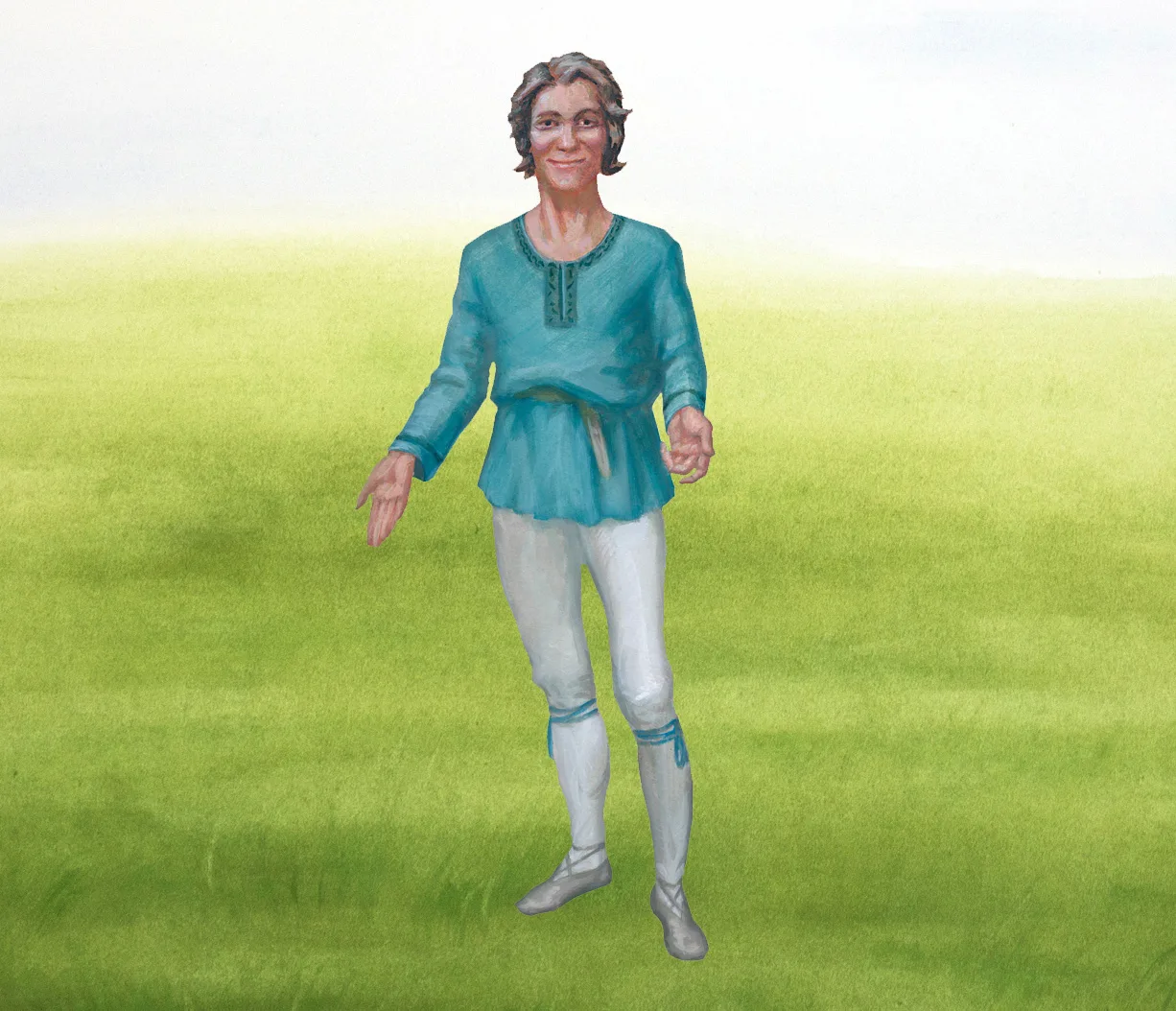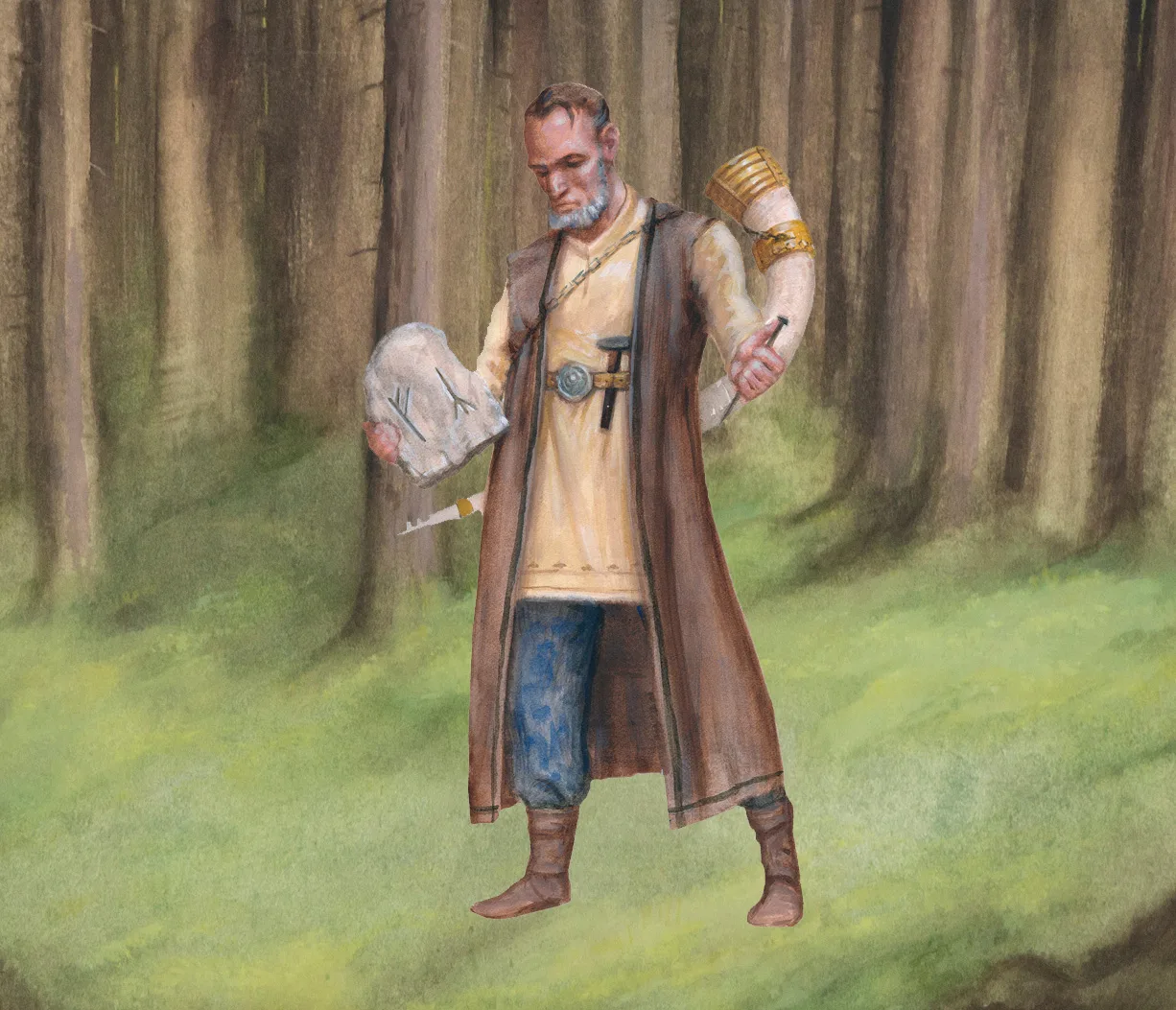Sources for Norse mythology
Iron Age
500 BC – AD 1100
Viking Age
AD 800 – AD 1100
Middle Ages
AD 1050 – AD 1520
Written sources that survive began as oral stories, later committed to writing. This recording took place after the Viking Age, at a time when the old faith, traditions and tales had largely been replaced by a new religion, Christianity. This is important to bear in mind when using the sources to gain insight into Viking Age beliefs and mythological traditions.

Figurine pendant
An enigmatic pendant depicting a man with outstreched arms found in grave Bj 649, Birka, Uppland. It might be an early version of a crucifix.
On view at Historiska museet in the exhibition Guldrummet
Two Eddas
The Poetic Edda, or Elder Edda, and Snorri Sturluson’s Edda, often called the Younger Edda, are two of the most frequently used sources.
The Poetic Edda is a collection of poems probably composed in western Norway and Iceland during the Viking Age. In the verses appear gods such as Odin and Baldr, but also legendary heroes such as Sigurd the Dragon-Slayer and the master-smith Völund.
Snorri’s Edda was written by the skald (what we would call a poet) and Icelander Snorri Sturluson. He lived and wrote in the 13th century. His Edda is a kind of handbook on Norse mythology and skaldic verse, intended for a medieval readership. He begins his work by describing how pre-Christian beliefs and traditions differed from Christianity.

Pendant ring
A silver ring with several smaller silver rings attached and one Thor's hammer. Found at Alunbruket, Öland.
Archaeology and names of places
In addition to written sources, there are other traces of Norse gods and myths. For instance, the names of deities are embedded in place names across Sweden, such as Torsåker, Odensala and perhaps even Friggeråker.
Archaeological finds can also be linked to gods and myths. Examples include amulets shaped like Thor’s hammer and sickle, a harvest tool associated with Freyr and Freyja.
Picture stones have been unearthed with what are interpreted as mythological motifs, such as the Ardre stone from Gotland, which you can see in the exhibition The Gold Room at the Swedish History Museum. Its images have been read as part of the story of the master-smith Völund. In Södermanland at least two rune stones are decorated with Thor’s hammer, and the so-called Altuna Stone in Uppland depicts part of the myth of Thor’s fishing expedition.

The Ardre Stone
One of four stones with imagery and rune text found in Ardre church, Gotland.









